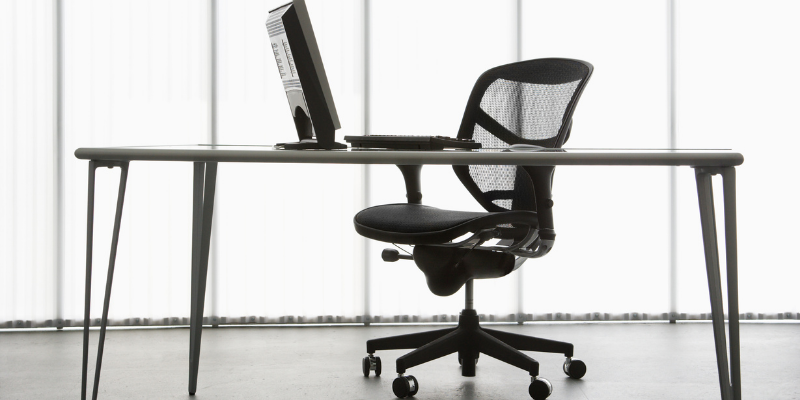Comfort and good posture are vital in being more productive at work, even if you’re working from home. That’s why having a fully adjustable office chair is recommended to have an ergonomic work environment. There are only five major office chair adjustments that you need to make so that your chair fits you perfectly.
What Makes A Good Ergonomic Chair?
Still, first, I wanted to quickly cover the seven recommended features of an ergonomic chair that you should look for when assessing the one you’re currently using or if you’re in the market to purchase a new one.
- It should have breathable upholstery
- Adjustable lumbar support that moves up and down
- Adjustable armrests that move up and down and left and right
- A seat pan with a rounded waterfall edge
- An adjustable seat pan that moves up and down and forward and backward
- A tilting mechanism that tilts the chair back and forwards, and lastly
- A five-caster base that rotates the chair 360 degrees
5 Office Chair Adjustments So It Fits You Perfectly
So now that you know the recommended ergonomic chair features, let’s go over the five essential office chair adjustments.
Office Chair Adjustment #1
Adjust the seat pan height so that your feet rest flat on the floor and your knees are slightly lower than your hips.
Office Chair Adjustment #2
Adjust the seat pan depth so that there’s adequate thigh support, and you can fit two to three fingers between the back of your knees and the front edge of your chair.
Office Chair Adjustment #3
Adjust the lumbar support height to fit into the deepest part of the curve in your lower back.
Office Chair Adjustment #4
Adjust the tilt of the chair’s back so that it’s upright and tilted back for your comfort. And lastly, number five.
Office Chair Adjustment #5
Adjust the armrests so they’re slightly below your elbows when your shoulders are relaxed.
Break Strategy

Even with the most ergonomic setup, ergonomic risks can still be present, especially without appropriate work breaks. Research has consistently highlighted the strong link between prolonged sitting and back pain.
Over time, this can contribute to lost productivity and the costs associated with workers’ compensation claims.
That said, choosing an effective break strategy shouldn’t be overlooked.
To improve your overall health, wellness, and productivity at work, take frequent micro-breaks every 20 to 30 minutes for about one to two minutes.
During those breaks, incorporate full-body postural changes such as moving from a seated workstation to standing or taking a quick walk, or if you’re already standing or using a sit-stand workstation, transition to sitting or take a brisk walk.
Congratulations, you’re now an expert at adjusting your office chair.
